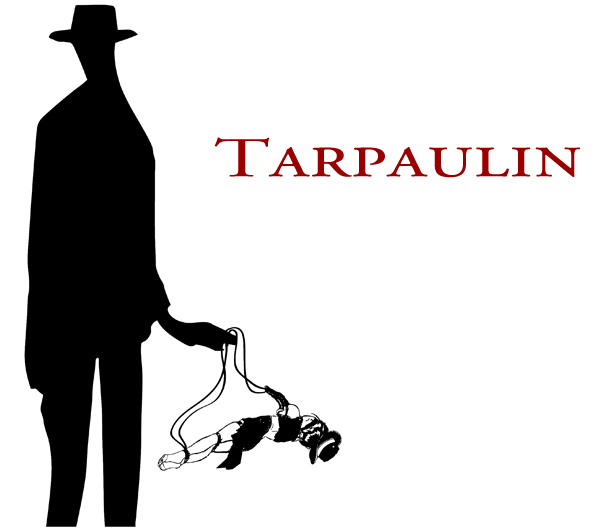
Derek Beaulieu
√¯¯¯
Default Publishing for Dusie Kolektiv year 3 (2009)
(pdf here)
This is a wonderful example of the book as an object, proving that the book-noun is not restricted to, or synonymous with, the codex (though this is often assumed to be the case – see Keith Smith's "The Book as Physical Object" in A book of the Book, edited by Jerome Rothenberg and Steven Clay (Granary 1999). This has obvious implications for the future of the e-book, which as of yet has mostly consisted of codex-simulation.)
The endeavours of many of the presses involved in the Dusie Kolektiv move beyond (or improvise upon) the codex’s generally accepted mode of existence as a semantically invisible vehicle for text, as is the case with this series of visual poems.
The concept of the codex is exploded here in a burst of multidirectional physicality, with the usual single, chronologically regulated trajectory replaced by a series of flaps, each operating as a breach or rupture in the book’s planar field, and containing one of the pieces in this series (constellation?).
This rupturing is not contained to the idea of the book, but also takes place on the graphemic level. Each of the four pieces that comprise this work exhibit a futurist/vorticist dynamism, exploding textual normalcy, which signification is made subordinate to the jouissance of visual dynamics. This bears resemblance to the calligraphy of graffiti artist’s bombs, or the logos of metal bands, where typographical aesthetics and excess subsume signification (take as an example of the latter the Xasthur logo, which, after the insertion of the central sigil, has become completely illegible). Like both of these, there is the remnants of a typeface, yet they are scattered, superimposed upon one another. There is no previous text to decipher, no history. There is just what this text will become in collaboration with a reader.
As such the flower-like opening of this work serves a similar function, while also telling of the potential existent in folds and cuts – I’d love to see what could be achieved in the collaboration of a visual poet and publisher doing something like Jack Ross’ Borges translations (especially with the beautiful production values of someone like Peptic Robot).
The only complaint I have is small, and that is the quality of the poems’ printing – they’re a bit blurry. However interesting issues arise here concerning reproduction, distribution, and the existence of the image; and thus the poem/book: where/what is the original? And if this lurks somewhere on a computer, as an intangible sequence of ones and zeroes – what, then, are the implications?




